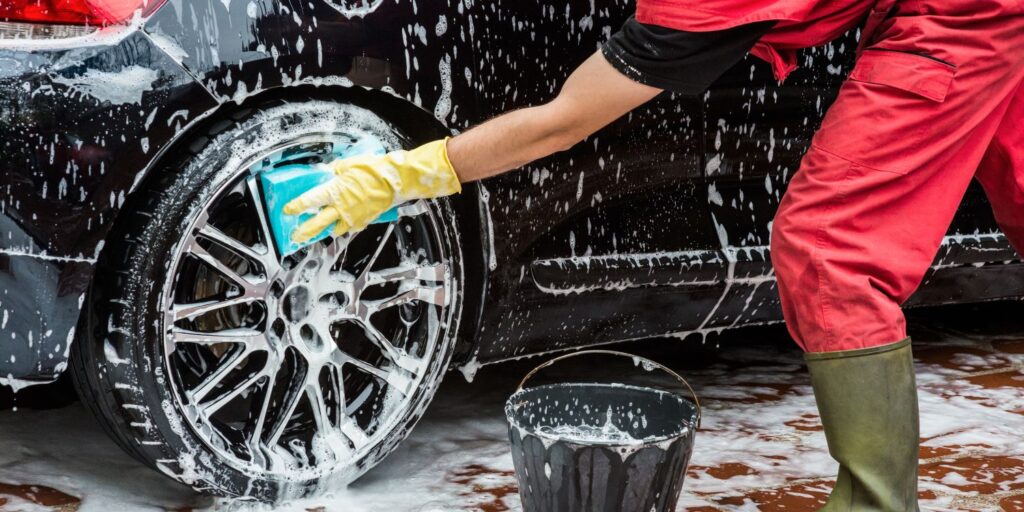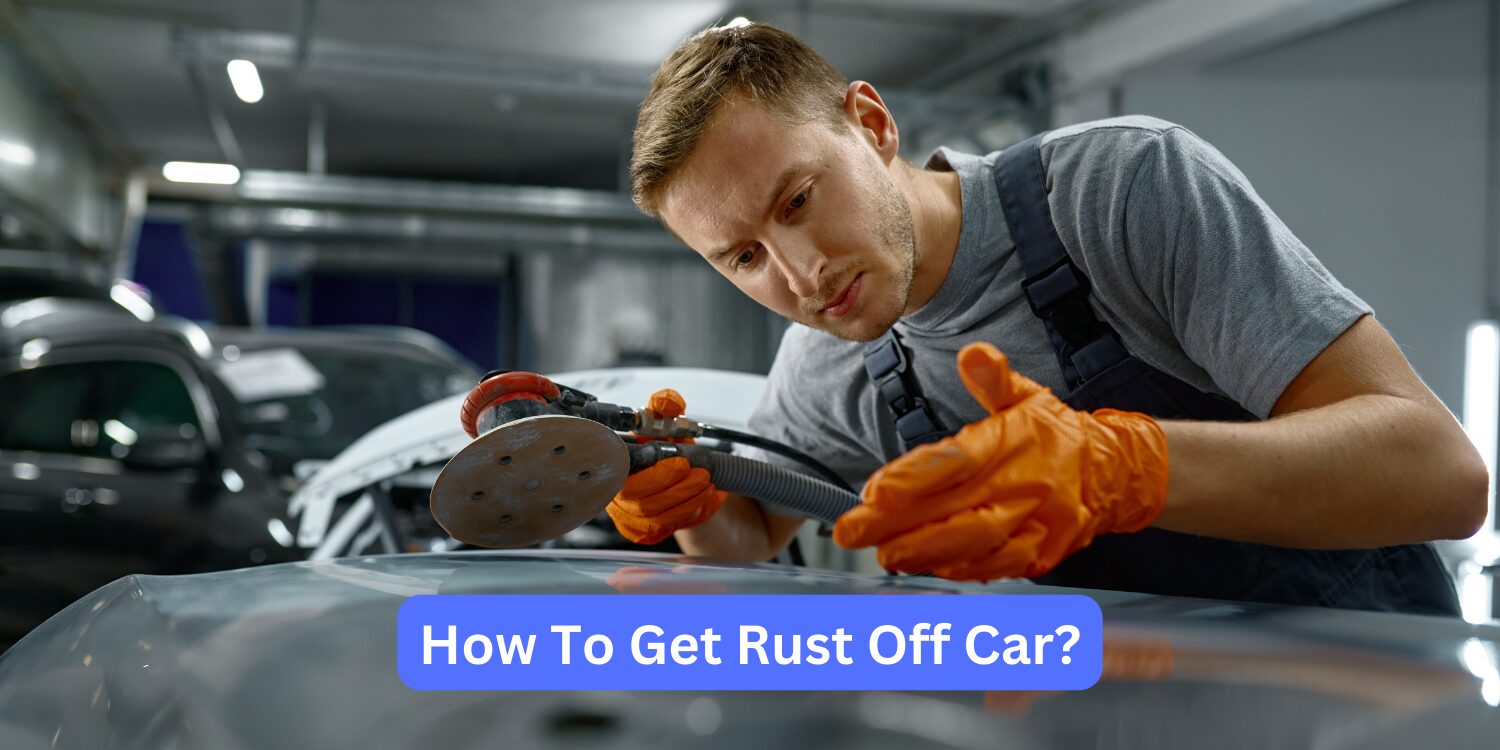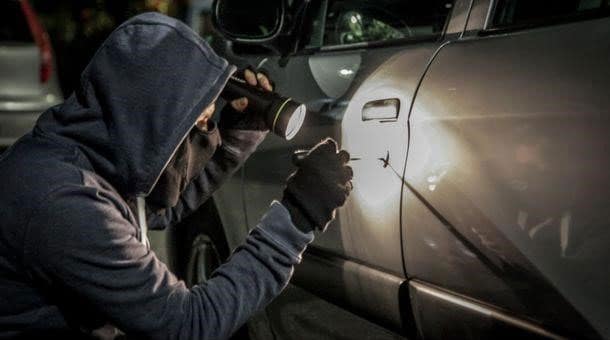Rust can be a major headache for car owners, but with the best approach, you can remove it and keep your car shiny and new. In this article, I will explore professional ways to remove rust from your car, so let’s start.
What do you need to remove the rust from your car?
Before you start removing rust from your car, it’s important to
Gather the necessary materials. You’ll need:
- Protective gear (gloves, goggles, mask)
- Rust remover or converter
- Sandpaper (medium grit)
- Primer
- Paint
- Wax
How To Get Rust Off Car?
Rust can make your car look old and worn out. Removing rust to keep your car looking good and prevent further damage is important. Here’s a simple guide to help you get rid of rust from your car:
Step 1: Inspect the Rust Damage:
Begin by examining your car’s affected area(s) for rust. Look for any bubbling, flaking, or discoloration, indicating rust beneath the surface.
Step 2: Gather Your Materials:
Collect all the necessary materials and tools for rust removal, such as rust remover (chemical or natural), sandpaper (medium to coarse grit), a wire brush, primer, paint matching your car’s color, and a rust inhibitor.

Step 3: Prepare the Area:
Park your car in a well-ventilated area or outdoors, preferably on a flat surface. Ensure the area is clean and free from debris that could interfere with the rust removal.
Step 4: Remove Loose Rust:
Use a wire brush to remove any loose rust particles from the affected area. Be thorough but gentle to avoid damaging the surrounding paint.
Step 5: Apply Rust Remover:
Apply the chosen rust remover according to the manufacturer’s instructions. This may involve brushing, spraying, or soaking the affected area. Allow the remover to sit for the recommended time to dissolve the rust.
Step 6: Sand the Area:
Once the rust remover has had time to work, use medium to coarse grit sandpaper to sand the area. Sand until the rust is completely removed and the surface is smooth and even.
Step 7: Apply Primer and Paint:
Apply a rust-inhibiting primer to the sanded area to prevent future rusting. Once the primer is dry, apply several thin coats of paint to the area, matching your car’s color. Allow each coat to dry completely before applying the next.
Step 8: Apply a Rust Inhibitor:
Finally, a rust inhibitor should be applied to the treated area to provide long-term protection against rust. Follow the manufacturer’s instructions for the application of the inhibitor.
Common Causes of Rust:
- Exposure to Moisture: Rain, snow, and humidity can all contribute to rust formation.
- Road Salt: Salt used to de-ice roads in winter can speed up the rusting process.
- Scratches and Chips: Damage to the car’s paint can expose the metal underneath to rust.
- Poor Maintenance: Neglecting to wash and wax your car regularly can make it more susceptible to rust.
Read Also: How Much Does It Cost To Tint Car Windows?
How to Prevent Your Car from Rust?
Preventing rust on your car involves a combination of regular maintenance and protective measures. Here are some steps you can take:
1: Wash Your Car Regularly:
Use a car wash soap and water to clean the exterior of your car, including the undercarriage and wheel wells, to remove dirt, salt, and other debris that can cause rust.

2: Dry Your Car Thoroughly:
After washing, use a clean, soft towel to dry your car completely, paying attention to areas where water can collect, such as door jambs, the trunk, and under the hood.
3: Apply a Coat of Wax:
Apply a coat of car wax to your car’s clean, dry surface to protect the paint from moisture and corrosion. Use a wax applicator pad or cloth to apply the wax in a circular motion, then buff it off with a clean, dry cloth.
4: Repair Scratches and Chips:
Inspect your car regularly for scratches and chips in the paint. If you find any, use touch-up paint or a paint pen to fill them in and prevent exposed metal from rusting.
5: Apply a Rust Inhibitor:
Consider applying a rust inhibitor or undercoating to vulnerable areas of your car, such as the undercarriage, wheel wells, and door edges, to provide additional protection against rust.
Conclusion:
Removing rust from your car is manageable with the right tools and techniques. By following the steps outlined above, you can effectively remove rust and restore the appearance of your car.
Regular maintenance and inspection are key to preventing rust from returning. With proper care, you can keep your car looking great for years.
FAQ:
Some Frequently Asked Questions about How To Get Rust off a car are:
How long does it take for rust to form on a car?
Rust can begin to form on a car in as little as a few months, especially in areas prone to high humidity or salt exposure.
Can I use sandpaper to remove rust from my car?
Yes, sandpaper can be effective for removing surface rust. Start with a coarse grit and gradually move to finer grits for a smooth finish.
Is rust on a car a sign of serious damage?
Rust on a car can indicate underlying structural issues, especially if it has penetrated deeply. It’s essential to address rust promptly to prevent further damage.
Can I prevent rust from returning once it’s been removed?
Regular maintenance, such as washing, waxing, and addressing paint damage, can help prevent rust from returning.
Are there any eco-friendly ways to remove rust from a car?
Yes, natural remedies such as vinegar, lemon juice, and baking soda paste are environmentally friendly and can be effective for light rust removal.




